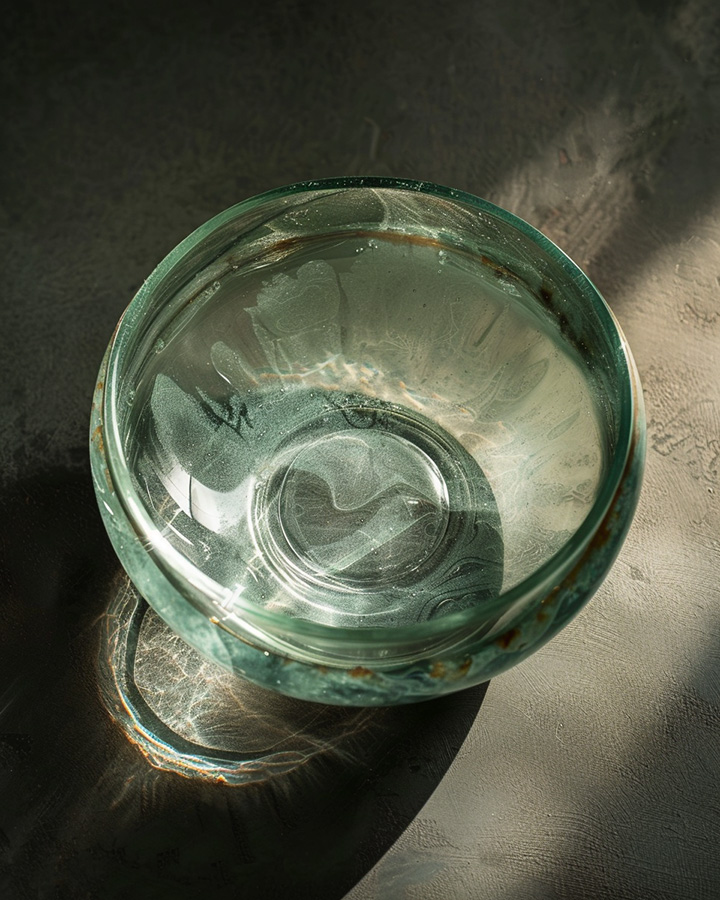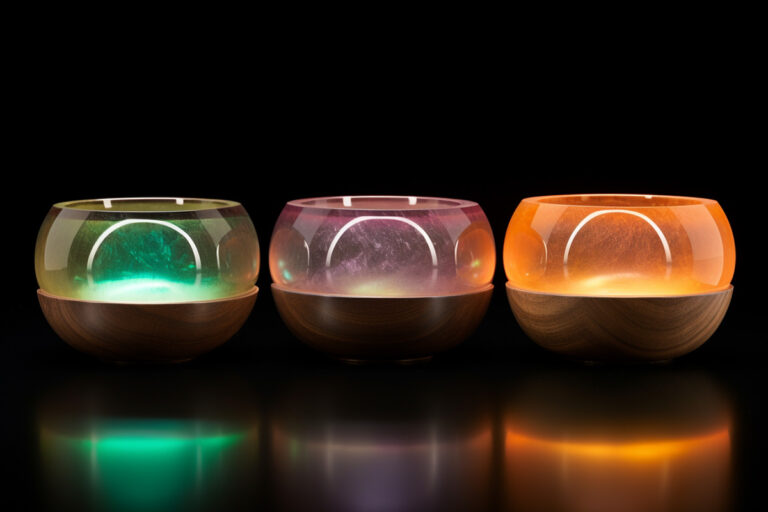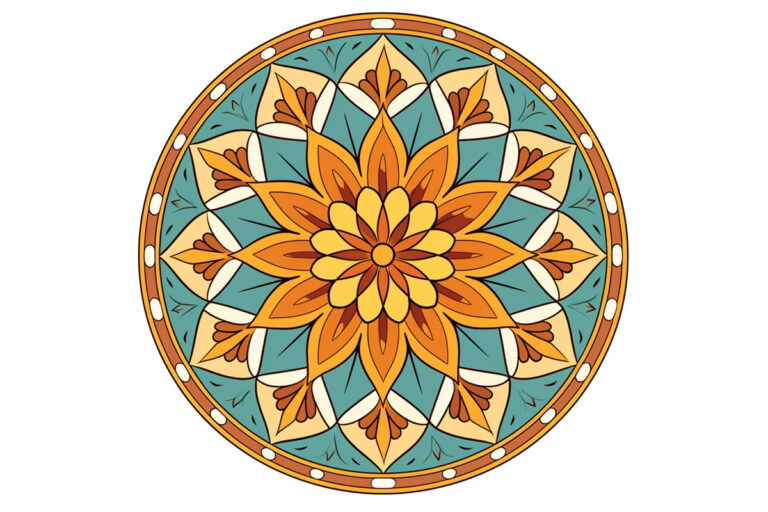The Art and Healing Power of Medicine and Divination Bowls
Return to Glassblowing
As I begin this period of my life, returning to glassblowing and the process of working with fire to transmute ideas into form with purpose and intent, I’m reminded of the research that’s often required of any artist before undertaking a new project.
Creating Medicine Bowls
In this case, I’m starting to create medicine bowls as gifts for my classmates and instructors. At first glance, those of you reading this might think this is too much, and sometimes, when I find myself overthinking, similar thoughts cross my mind.
Reflecting on the Path
But when I look into the future — 10, 15, or even 20 years from now — I think of these fellow travelers on the path, and the old salts that are walking alongside with me, and I want them to know that the choices they’ve made will have been worth it.
The effort to know thyself is worth it.
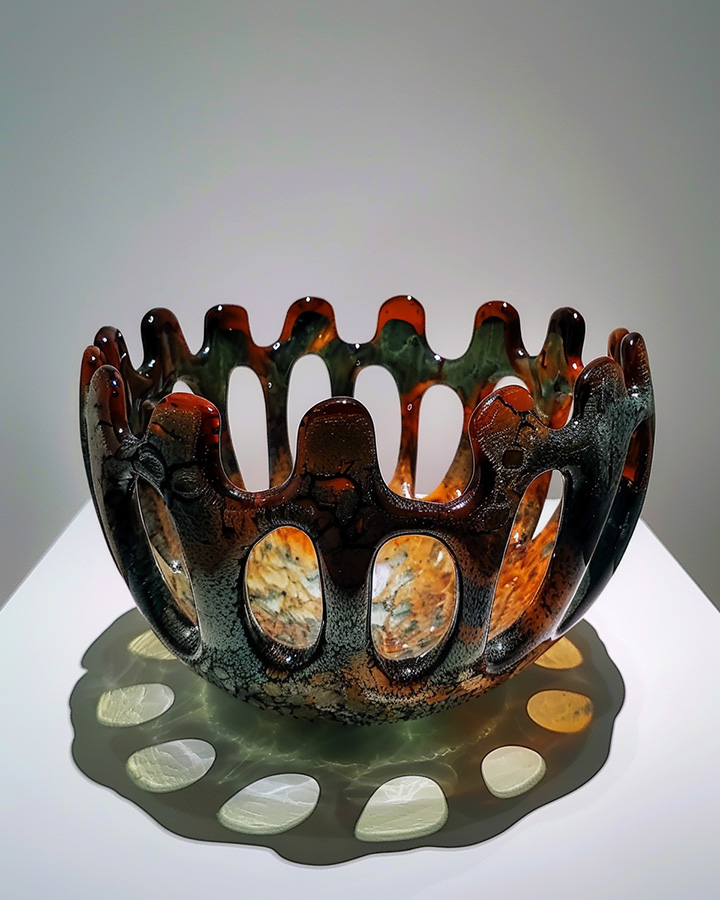
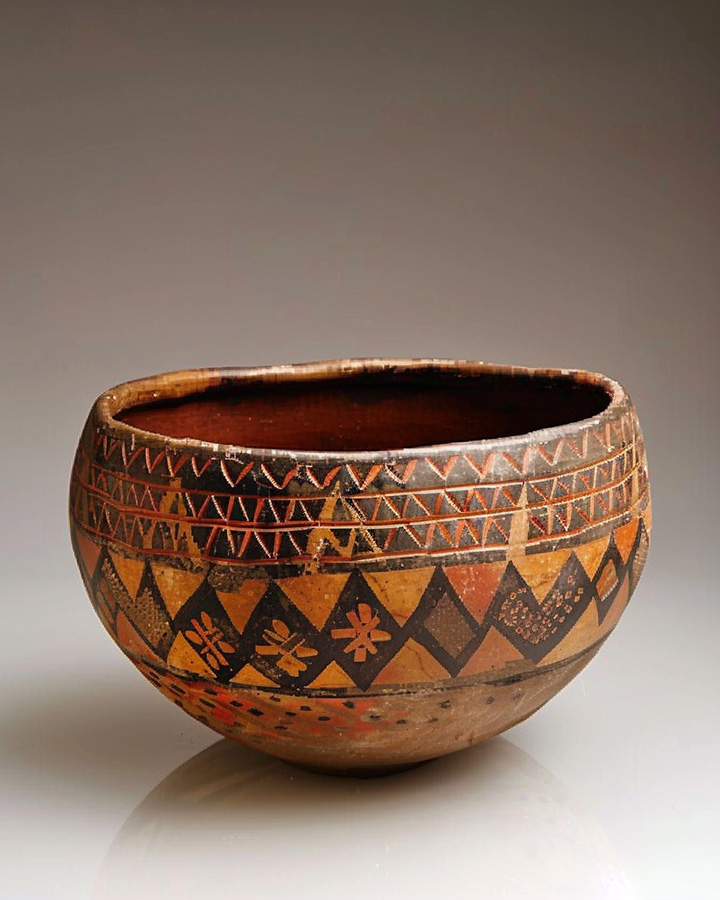
The Spiritual Significance of Medicine and Divination Bowls
I also want them to know that when they look at their medicine or divination bowl, given to them in the year 2025, they might realize this is what they were searching for all along. Now, this isn’t to say that I’m the only person capable of serving in this capacity; rather, I’m simply a reflection pointing inward, just as others have done for me.
This isn’t an attempt to objectify the innate spiritual qualities that Chinese medicine asks of its practitioners and recipients with a glass bowl. To understand the Dao is to move to a place of inner silence, a place beyond words.
Balancing Creativity and Discipline
This part of my life, however, is about providing structure to a creative process that requires a sense of discipline if I am to achieve even a morsel of success. And if that morsel of success is to be savored like a warm glass of milk and honey, then I must practice my craft with a degree of precision.
From Intermediate to Advanced
When I wrote the last article, I mentioned that I had last left off as an intermediate glassblower. Well, after attending a local glassblowing demo this past weekend and seeing the skill level of their gaffers in action, I now feel the need to upgrade that to advanced. It’s not that this team of glassblowers wasn’t great — they were terrific — it’s just that I hadn’t had the chance to sit back and watch glass being made for some time.
The Art of Collaboration
What a great reminder it was to watch a glassblowing team communicate their efforts like a well-coordinated group of dancers in motion.
The Role of Medicine and Divination Bowls in Indigenous Cultures
Before moving forward with this project, however, I wanted to take some time to highlight the importance and use of medicine bowls within indigenous communities around the world, as well as the role of divination bowls. Both types of bowls are functional and decorative, serving clinical and energetic purposes.
Enhancing Creativity with Midjourney AI
As a reminder, all of these images were created using Midjourney AI, a tool that enhances my creative process by allowing me to explore conceptual ideas more freely and at a faster pace than rudimentary sketching alone.
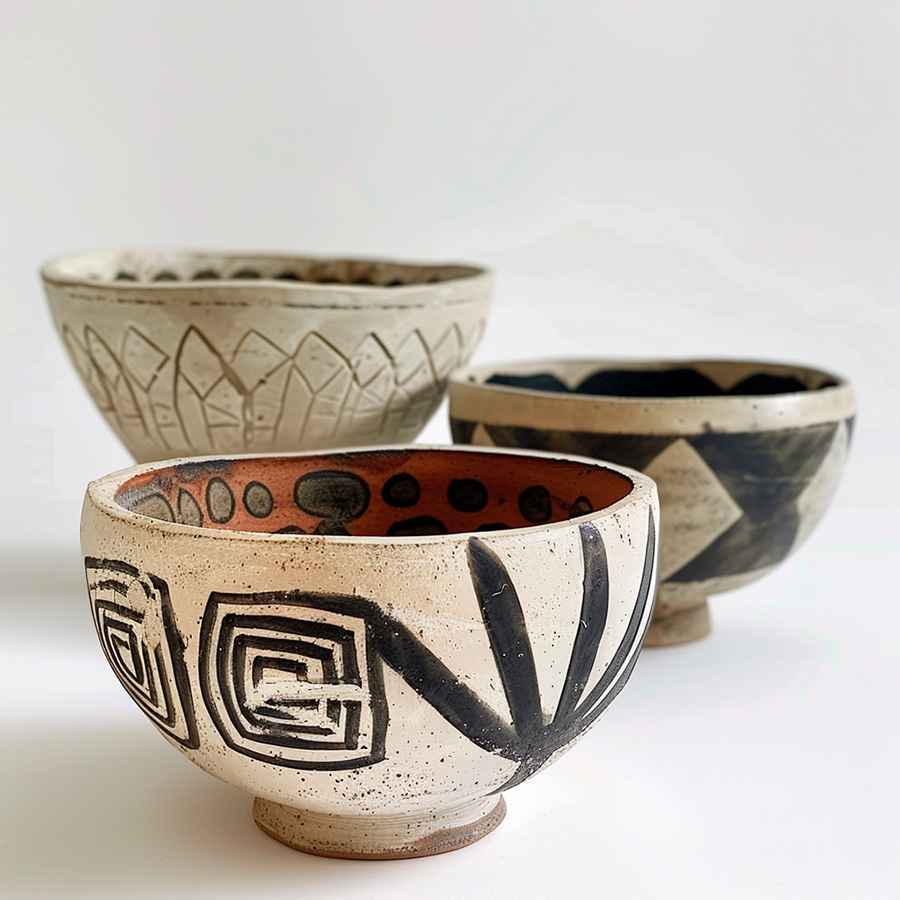
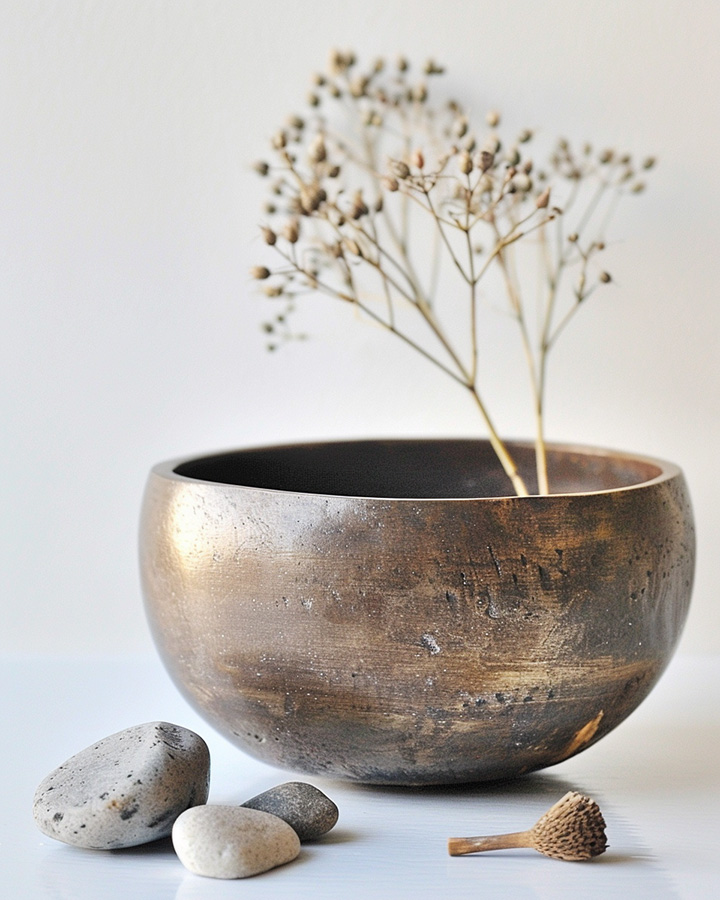
Indigenous Medicine Bowls
Not to be confused with metal singing bowls or a stone mortar and pestle, historically used to crush and grind plants into pastes or powders, medicine bowls are commonly found within indigenous cultures around the world. While medicine bowls can be used to store sacred herbs, plants, water, or other materials important in healing and purification rituals, they may also be used to draw upon or disperse spiritual energies before returning them to the Earth.
In this example, we see a simple wooden or clay bowl with dried plants and a few small stones beside it. With its simple appearance and functional use, it’s easy to see how this bowl could fit well in a home altar, bodywork practice, or living space.
Wooden Smudging Bowl
While smudging is typically performed using an abalone smudge bowl, the presence of a feather suggests this may be a wooden smudging bowl. In practice, the heat from the burning materials could radiate through the wooden base, raising concerns about burns. However, this well-used bowl, with its worn edges and aged discoloration, has clearly served its purpose in many ceremonial smudges.
In many Native American traditions, the four medicines used in smudging ceremonies — tobacco, sage, cedar, and sweetgrass — are intended to cleanse the body and mind, with the assistance of spiritual guides and allies that reside in dimensions beyond our own.
In Chinese medicine, we use a similar yet distinct practice involving a dried plant that produces heat to build energy, or qi, within the body and smoke to cleanse the exterior in a similar manner. Moxibustion, which uses dried mugwort, is often applied with a cigar-shaped stick and is an effective treatment for stimulating certain acupuncture points. Although medicine bowls are not required when applying moxibustion, it’s often helpful to have a small bowl nearby to manage the ashes.
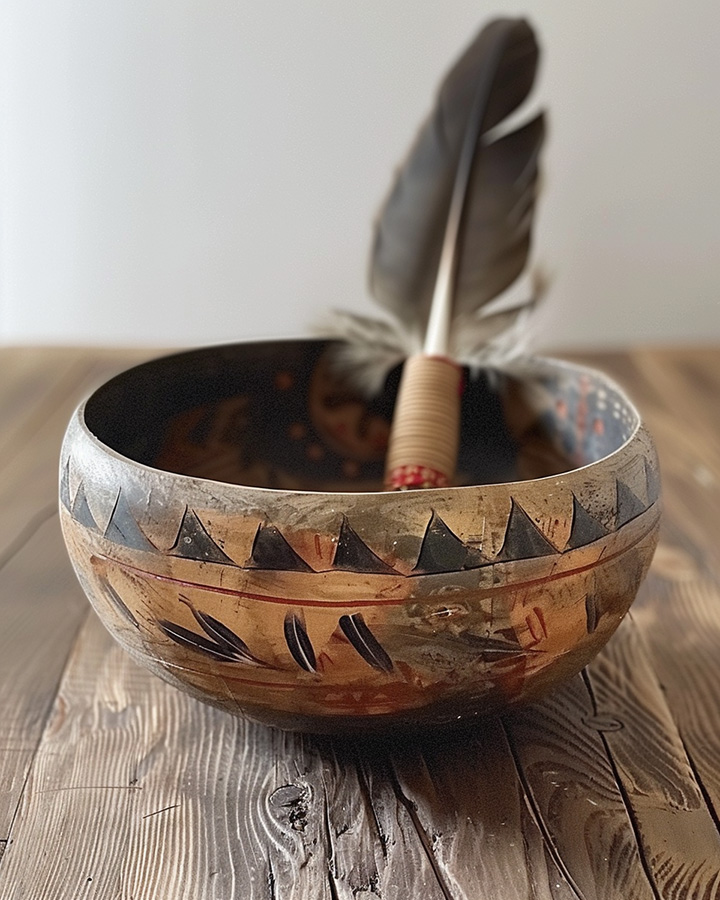
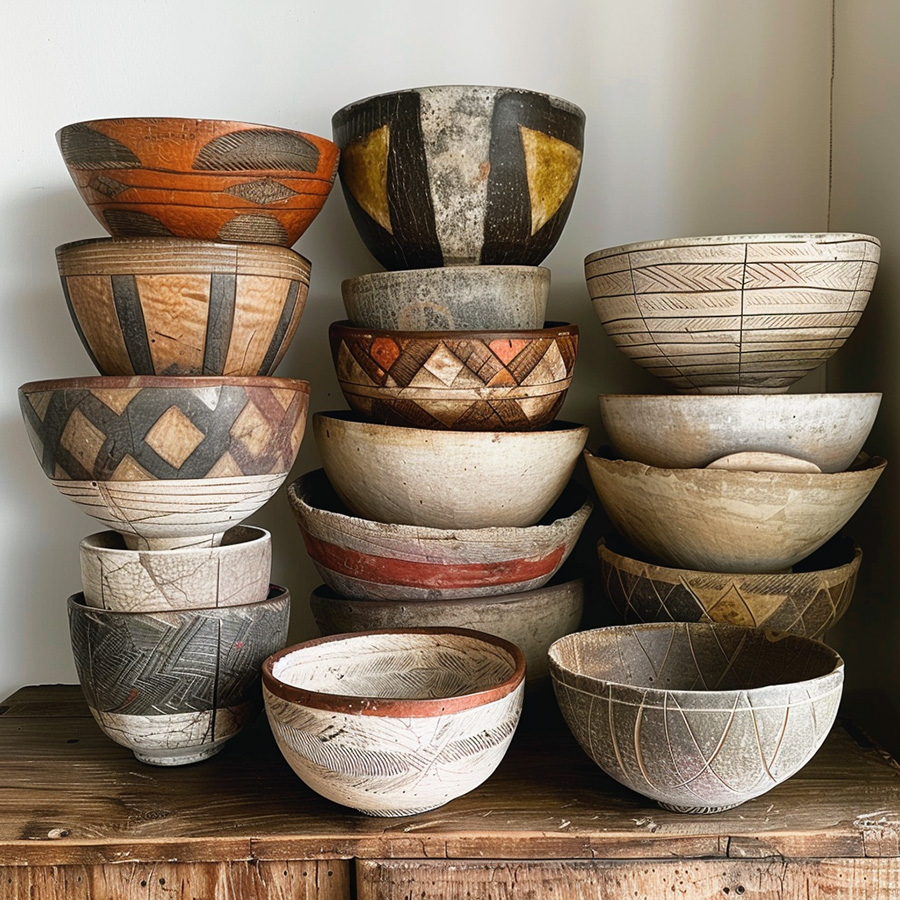
Nsibidi Bowls
Nsibidi Bowls, from the Igbo culture of Nigeria, come to us from an ancient system of writing known as Nsibidi. This writing system, which includes symbols, ideas, and messages unique to secret societies within these cultures, is known to convey powerful messages of cultural knowledge. The bowls are often made from wood, clay, or calabash and are then adorned with these symbols, making them both functional and meaningful within Igbo society.
From a ceremonial perspective, Nsibidi bowls are used by diviners and seers during divination practices, often holding water, palm oil, or a mixture of herbal concoctions. The symbols carved or painted on the bowls enhance the spiritual energy and potency of the bowl, serving as a conduit for communication with the spirit world, including ancestors or deities. The divination process, like many others across the world, goes a step further with the addition of shells, seeds, or bones, which are then cast into the bowl and interpreted before being shared with the querent, initiate, or community at large.
Divination Bowls
Like medicine bowls, divination bowls can serve a dual purpose. Typically made from clay, wood, or metal, these bowls can hold water, oil, herbs, or even the energy tied to the ailments the practitioner aims to address. Practitioners can then interpret the reflections, movements, or patterns within the bowl during rituals. In many practices, these bowls are also used for scrying, where the reflective surface can provide a vision or stimulate one’s third eye, facilitating communication with the spirit world.
Glass is especially well-suited for divination and scrying bowls due to its transparency, translucency, and the unique qualities of light that different colors of glass can bring to the bowl. A glass bowl can capture and refract light, creating patterns on the surface of the water inside, adding depth and color to the reflections — further stimulating one’s psychic abilities. This allows practitioners to enter a deeper meditative state where insights can emerge more clearly and without distraction. The clarity of glass also symbolizes a clear connection between the physical and spiritual worlds, making it a powerful medium for these practices.
From a historical perspective, divination bowls have a rich and storied use that dates back to biblical times, with contexts that extend beyond the scope of this article. Whether used as ceremonial or offering bowls, or as alms bowls and puja bowls in Buddhism and Hinduism, the circular form and supportive features of the simple bowl have proven themselves timeless throughout history. These bowls have not only served as vessels for practical purposes but have also been revered as sacred objects that facilitate spiritual connection and ritual.
In my healing arts practice, I draw inspiration from this timeless tradition. By crafting glass bowls that echo the ancient forms and functions of these sacred objects, I aim to create vessels that are not only beautiful but also imbued with a deeper purpose. Just as these bowls have historically served as conduits between the physical and spiritual realms, the glass bowls I create are intended to support healing, meditation, and spiritual exploration in contemporary practice.
